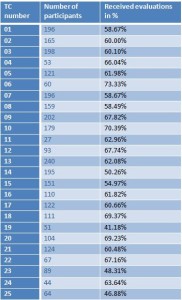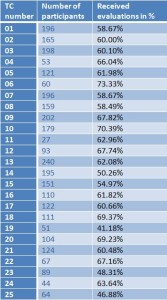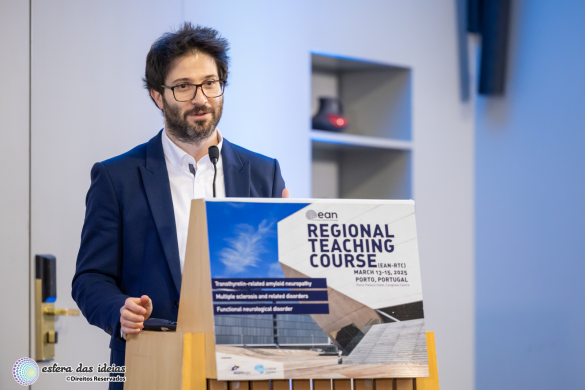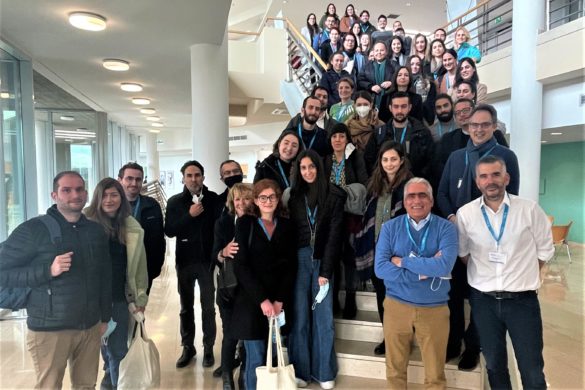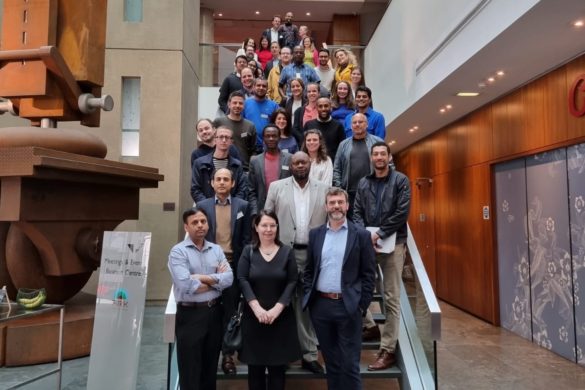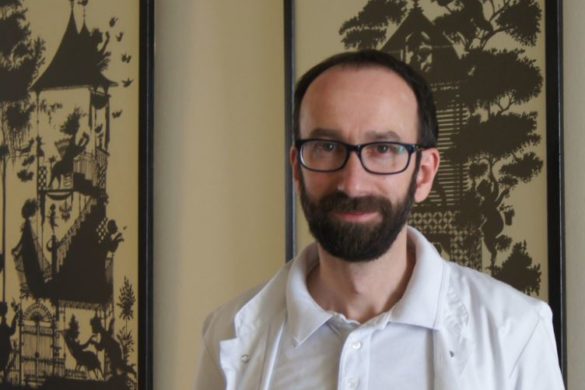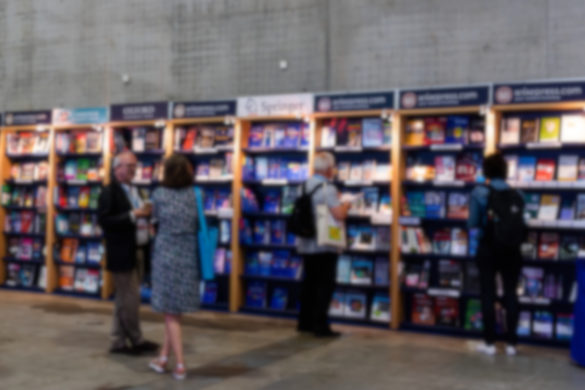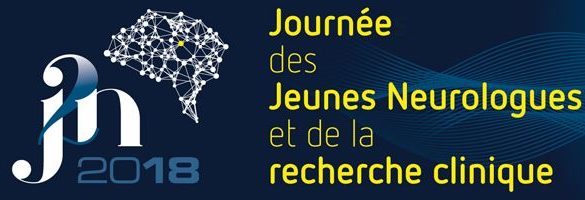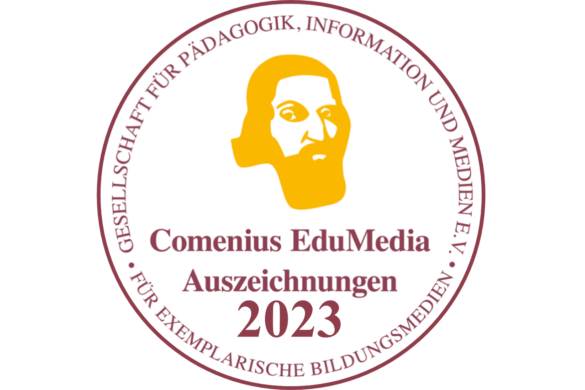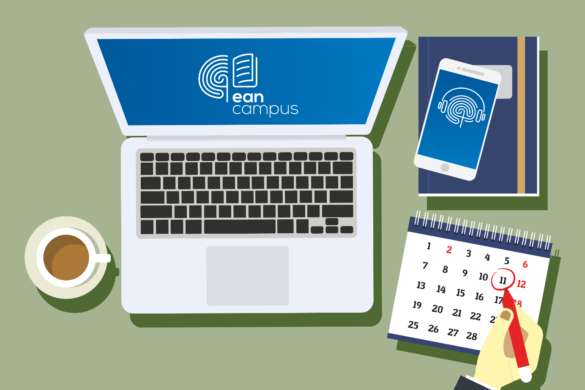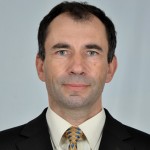 by Vitalie Lisnic
by Vitalie Lisnic
As before, also in 2014 all TC participants had to fill in an evaluation form in order to get their Certificate of Attendance. This way, the EAN received a lot of feedback, which will help the organisation, as well as the TC Chairs to improve the courses at future congresses.
The 25 Teaching Courses and 3 Hands-on courses (Link to TC Programme 2014) were attended by a total of 3121 persons. The courses with the most attendance were Teaching Course 13 (240 participants), Teaching Course 9 (202 participants) and Teaching Course 3 (198 participants).
The evaluation form contained questions regarding the TC speakers (academic content and clarity of the lecture), the room facilities, the quality of slides/hand-outs etc.
The Profile of Participants
The Profile of Participants has been an important part of the Congress Evaluation for the EAN (EFNS & ENS) since 2005. This year, the organisers received a record number of filled in forms from the participants: 1507. The attending persons came from more than 100 different countries all over the world.
According to the filled in “Profile of Participants”-form, the majority of the participants (63%) were fully trained physicians. 16% of them had a PhD degree. More than a quarter of attenders (26%) were residents and 4% were undergraduate students.
The evaluation of the Profile of Participants also showed that at this year´s Teaching Courses were attended by a majority of young professionals, which is contrary to previous congresses. About 27% of the TC participants were younger than 30 years and 22% were between 30 and 35. Also, this year´s TCs had a slight female predominance (52% vs. 42%, 6% didn’t answer this question), whereas at the last congresses both genders were almost equally represented.
The vast majority of the TC participants were neurologists (89%). Professionals from other specialties were radiologists (2%), neurosurgeons (1%), psychiatrists (1%) and other (11%).
The majority of the participants came to the TCs by own means (36%) or with bursary support (as well 36%). Sponsored by companies were 27% persons. At the previous congresses the majority of the participants in the TC were supported by companies.
Most of the TC participants felt comfortable about the organisation of the congress. Regarding the future meetings, 49% said they would like a reduced registration fee, whereas 24% considered it appropriate. More than half of the participants were satisfied with the scientific sessions within the congress and 44% were satisfied with the educational sessions. The industry representation met the needs and views of the TC participants. 19% suggested paying more attention to the organisation of the social events.
Some of the TC participants suggested organising more Teaching Courses and having them take place every single congress day. They proposed to hold the courses in smaller groups which would allow more interaction between moderators, speakers and audience, and to benefit from more case presentations. Some of the TC attendants said they would prefer to receive more detailed hand-outs or to have the lecture materials provided online. Several persons proposed not to hold the poster sessions during the lunch break and to increase the time available for each poster presentation. Several TC participants said they would appreciate an increase of the number of practical courses.
Most of the TC participants considered the courses excellent and were happy to attend them. Still, some critical remarks could be noticed, too. For example some suggested to have fewer sessions but of better quality in the future. Also, some of the attendants made topic suggestions for future Teaching Courses, such as lectures on interventional radiology, neurophysiology, rare neurological disorders, fundamental biostatistics, neurogenetics, neuropharmacology, neuropsychiatric disorders, sleep disorders etc.

